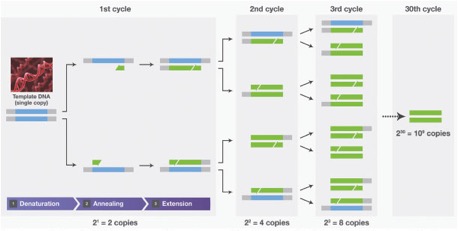Several diagnostic testing options are available when a mastitis problem has been identified. Consider your options based on the needs of your dairy farm, then work with your herd veterinarian to develop a mastitis control program that fits your specific operation.
Overview of Testing Methods
Test |
Identification of mastitic milk |
Identification of pathogen |
Fast |
Reliability |
Test location |
Milk sample type |
California Mastitis Test
Detergent lyses white blood cells (leucocytes) in milk sample, resulting in viscosity of the fluid. This is a measure for severity of infection.
|
✓ |
✗ |
✓ |
✓ |
Farm |
Fresh milk |
Somatic cell count
Counting of leucocytes in a milk sample, either under a microscope or using automated cell counting systems (flow cytometry).
|
✓ |
✗ |
✓ |
✓ |
Lab |
Fresh milk |
ELISADetects antibodies instead of pathogen; infection may no longer be active.
|
✗ |
✓ |
✓ |
✓ |
Lab |
Fresh, Frozen, Preserved |
Bacterial culture
Milk sample is streaked on culture plates. Viable pathogens form colonies that are counted.
|
✓ |
✓ |
✗ |
✓ |
Lab |
Fresh |
Multiplex PCR
Amplification and detection of nucleic acid of mastitis-causing pathogens. Screening for multiple pathogens in one run. Indicates active infection. Pathogens do not need to be viable.
|
✓ |
✓ |
✓ |
✓✓ |
Lab |
Fresh, Frozen, Preserved |
What is PCR?
Infectious disease is the biggest cause of economic loss for livestock farmers. A more comprehensive understanding of disease status along with the introduction of real-time PCR testing has shifted the way veterinarians and farmers are using diagnostics. PCR is used in outbreak situations and with pathogens that can be tough to culture, but it’s also used in routine disease monitoring programs.
The polymerase chain reaction (PCR) is used to exponentially reproduce or amplify specific sections of DNA. Those DNA samples can be used to test for mastitis and other disease pathogens.

Taking a clean sample is critical to a successful pathogen diagnosis. Follow these steps:
Aseptic Milk Sampling Procedure

Photo use with permission from Heidi Hiitiö, University of Helsinki
- Clean the udder from visible dirt
- Prevent kicking
- Wash your hands
- Clean the teat end with 3 clean swabs dipped in 70% alcohol disinfectant
a. If the teat end is in poor condition, more cleaning may be needed - Open the milk tube corn and keep it clean in your palm
- Milk the sample keeping the tube in horizontal position
- Close the cork immediately
- Add markings like cow number, quarter and date on the tube
- Important: only one quarter to one tube

